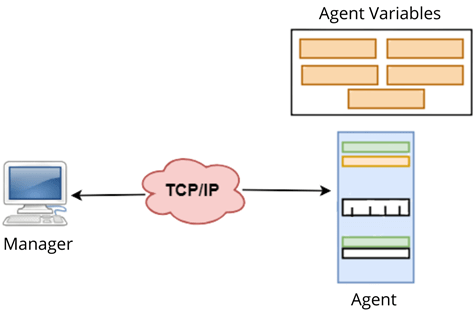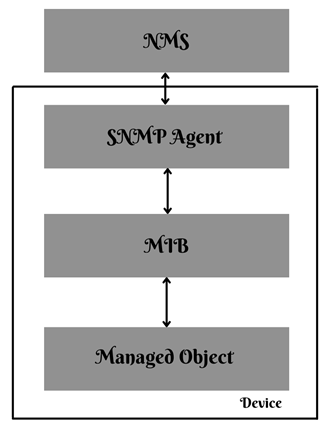How do SNMP works? Here is a Detailed Explaination.
What is Simple Network Management Protocol ?
Simple Network Management Protocol (SNMP) is an application protocol that is used to manage the network devices on a public or private network, by using port numbers 161 & 162. The main perspective of SNMP is to provide network devices such as routers, servers, and printers with a common language for sharing information with a network management system (NMS).

What are the components of SNMP?
- SNMP Manager.
- SNMP Agent.
- MIB (Management information base).

SNMP Manager – SNMP Manager is often known by Network management system (NMS), which is a centralized system used to monitor networks, the NMS actively requests agents to send updates at regular intervals.
SNMP Agent – these are the software modules that are installed on network devices collecting data about disk space, bandwidth use, and other important network performance metrics. When queried by the SNMP manager, the agent sends the requested information back to the management system. Most of the devices come with SNMP pre-installed
MIB (Management information base) – MIB consists of all the information that is to be managed. This information is organized in a hierarchal manner. Each MIB item is assigned an object identifier (OID).
How SNMP Works?
SNMP can perform a throng of functions, using a combination of push and pull communications between network devices and the management system. It can issue read or write commands, such as changing a configuration setting or resetting a password. It can also report back how much bandwidth, CPU and memory are in use, with some SNMP managers automatically sending the administrator an email or text message alert if a predefined threshold is exceeded.
Most of the time, the communication is initiated by the SNMP manager and the agent sending a response. These commands and messages are transported over User Datagram Protocol (UDP) Or Transmission Control Protocol/Internet Protocol (TCP/IP), known as protocol data units (PDUs):
- GETRequest:– this message is generated by the SNMP manager and sent to an agent to obtain the value of a variable, which is identified by its OID, in a MIB.
- RESPONSE:- This message is sent by the agent to the SNMP manager, issued in reply to a GETRequest, GETNEXTRequest, GETBULKRequest, and a SETRequest. It Contains the values of the requested variables by the SNMP manager.
- GETNEXTRequest:- Sent by the SNMP manager to the agent to retrieve the values of the next OID in the MIB’s hierarchy.
- GETBULKRequest:- Sent by the SNMP manager to the agent to efficiently obtain a potentially large amount of data, especially large tables.
- SETRequest:- Sent by the SNMP manager to the agent to issue configurations or commands.
- TRAP:- An asynchronous alert sent by the agent to the SNMP manager to indicate a significant event, such as an error or failure, has occurred.
- INFORMRequest:- An asynchronous alert similar to a TRAP but requires confirmation of receipt by the SNMP manager.
Zindagi Technologies is an IT consultancy and professional services organization based out of New Delhi, India. We are experts in large-scale data center design and deployment, service provider network design, information security, blockchain, IoT, Smart Cities, and Private/Public/Hybrid cloud solutions. Each one of us has years of experience in large-scale network design, deployment, and automation. You can reach out to us on +91- 9773973971 or visit our website for more information.
Author
Sameer Vats
Associate Consultant
